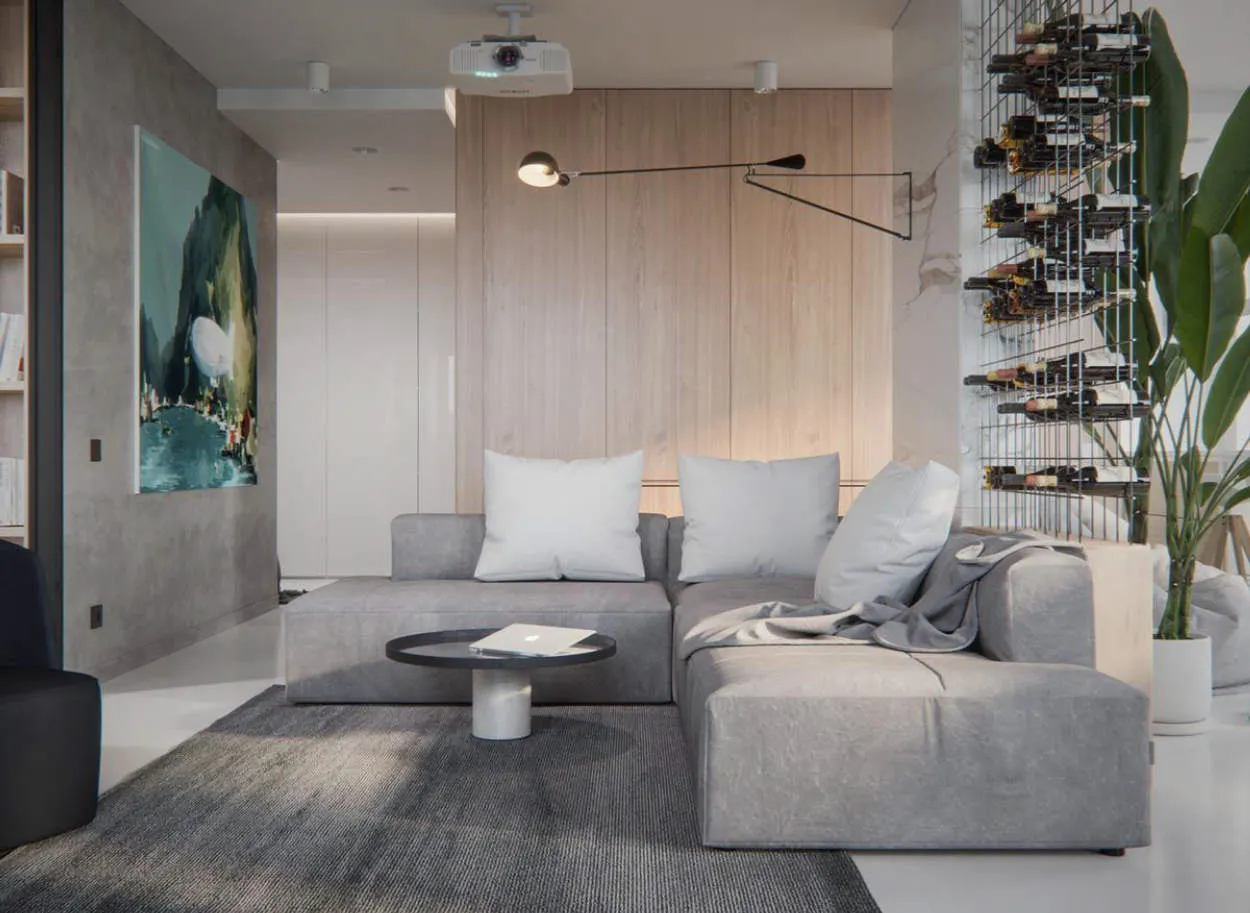Create a serene ambiance in your living room with an Asian-inspired design. Drawing on the principles of tranquility and balance, this style combines natural materials, minimalist furniture, and soothing colors. Discover how to transform your space into a peaceful retreat that reflects the harmonious beauty of Asian aesthetics.
Elements of Asian Design
Asian design encompasses various cultural influences and is known for its distinctive characteristics. These elements can create a sense of tranquility and balance in an Asian-inspired living room.
Simplicity
Simplicity is a key aspect of Asian design. Minimalism is often favored, with clean lines and uncluttered spaces. This simplicity allows for a calm and peaceful atmosphere.
Natural Materials
Natural materials such as wood, bamboo, and stone are commonly used in Asian design. These materials provide a connection to nature and promote a harmonious environment.
Neutral Colors
Neutral colors like beige, brown, and gray are commonly used in Asian-inspired living rooms. These understated hues create a soothing and balanced backdrop, allowing other elements to take the spotlight.
Feng Shui
Feng Shui, an ancient Chinese practice, plays a significant role in Asian design. It focuses on the arrangement of furniture and objects to harmonize energies and create a flow of positive chi.
Symbolism
Asian design often incorporates symbolism through artwork, sculptures, or decorative items. These symbols can represent concepts such as prosperity, longevity, or good luck.
Textures
Textures in Asian design are essential for adding visual interest. Incorporating elements like shoji screens, silk fabrics, or woven rugs can enhance the overall aesthetic and create a sense of depth.
Balance
Balance is a fundamental principle in Asian design. Achieving a harmonious arrangement of furniture, colors, and decorative pieces creates a sense of equilibrium and promotes a peaceful ambiance.
Creating a Zen Space
In the pursuit of a serene and balanced living environment, creating a Zen space within your home can greatly contribute to your overall well-being. Drawing inspiration from Asian aesthetics, an Asian-inspired living room can offer tranquility and harmony to enhance your everyday life.
Minimalistic Design
A central aspect of creating a Zen space is adopting a minimalistic design. Keep the room uncluttered and only include essential furniture and décor. Choose neutral colors such as beige, white, or earth tones to provide a soothing backdrop.
Natural Elements
Incorporate nature into your Asian-inspired living room to establish a connection with the outdoors and promote a sense of peace. Use materials like bamboo, wood, and stone for furniture and flooring. Introduce indoor plants to purify the air and add a touch of greenery.
Feng Shui Principles
Applying Feng Shui principles is essential to create a harmonious environment. Arrange furniture to encourage the flow of energy and place a stunning centerpiece, such as a traditional Asian artwork or a carefully chosen vase, to serve as a focal point. Avoid sharp angles and choose rounded or curved shapes to promote a smooth energy flow.
Meditation Area
Designate a specific area within your living room for meditation or relaxation. Place a comfortable cushion or a low, Japanese-style seating arrangement in this space. Enhance the atmosphere with soft lighting, scented candles, and soothing music to create a tranquil ambiance that promotes introspection and calmness.
Declutter Regularly
To maintain the Zen atmosphere, make decluttering a regular practice in your Asian-inspired living room. Regularly assess and remove any unnecessary items to ensure cleanliness and order. By simplifying your surroundings, you can create a space that encourages peace and clarity of mind.
Furniture Selections
When designing an Asian-inspired living room, the selection of furniture plays a crucial role in creating an atmosphere of tranquility and balance. Each piece should be carefully chosen to reflect the simplicity, elegance, and harmonious nature of Asian design principles.
1. Minimalism
Embrace minimalism by opting for furniture with clean lines and a streamlined appearance. Avoid excessive ornamentation or intricate detailing. Look for furniture pieces made from natural materials such as bamboo, wood, or rattan to add warmth and authenticity to the space.
2. Low Seating Options
Incorporating low seating options like floor cushions or Japanese-style tatami mats can enhance the serene ambiance of an Asian-inspired living room. These seating arrangements not only provide a comfortable and relaxed seating experience but also contribute to the overall balance and flow of the space.
3. Natural Colors
Stick to a color palette that reflects nature’s hues. Earthy tones like browns, greens, and soft neutrals are commonly used in Asian-inspired interiors. Incorporate these colors into your furniture choices to create a grounding effect and evoke a sense of calmness.
4. Multifunctional Pieces
Select furniture pieces that offer multifunctional features. For example, an ottoman with built-in storage or a coffee table that can be used as a meditation space. This not only maximizes the functionality of the room but also aligns with the principles of simplicity and practicality.
5. Serene Lighting
Consider incorporating soft and warm lighting fixtures to create a tranquil atmosphere. Paper lanterns, inspired by traditional Japanese design, can add a touch of elegance to the space. Dimmer switches can also be installed to adjust the lighting intensity based on the desired mood.
Color Harmony
In an Asian-inspired living room, creating a sense of tranquility and balance is essential. One way to achieve this is through careful consideration of color harmonies.
Asian design often incorporates a palette of calm and soothing colors, such as soft neutrals, muted pastels, and touches of bold accents. These colors work together to establish a serene atmosphere in the space.
For instance, a combination of light beige walls with accents of moss green and bamboo elements can evoke a sense of nature and serenity. Additionally, using shades of blue and gray can create a peaceful and calming ambiance.
Another popular choice in Asian-inspired living rooms is the use of warm earth tones, such as taupe, terracotta, and brown. These colors symbolize stability and connection to the natural world, bringing a grounding and balanced energy to the space.
When selecting colors for an Asian-inspired living room, it is essential to choose hues that harmonize with each other and create a cohesive and balanced look. Incorporating natural materials and textures in the furniture and decor further enhances the overall sense of harmony in the room.
Integrating Natural Materials
Natural materials are playing a significant role in creating Asian-inspired living rooms filled with tranquility and balance. These materials not only add a touch of elegance but also bring the calming elements of nature indoors.
One of the key natural materials used in Asian-inspired living rooms is bamboo. Bamboo is not only sustainable but also versatile, making it an excellent choice for furniture, flooring, and decorative items. Its light color and intricate texture add a sense of serenity to the space.
Another natural material commonly utilized is wood. From traditional wooden panels to sleek hardwood flooring, wood brings warmth and a sense of grounding to the room. Choose furniture with natural wood finishes or opt for accessories made from reclaimed wood to enhance the natural feel.
Stone is also a popular choice in Asian-inspired living rooms. Incorporating stone elements, such as stone tiles or a statement stone wall, can introduce a sense of harmony and stability. The natural variations in colors and textures of stone can be used to create a visually appealing focal point.
Add organic textiles to the mix to complete the look. Use natural fibers like cotton, linen, or silk for curtains, upholstery, and cushions. Earthy tones and subtle patterns further enhance the overall atmosphere.
Don’t forget to incorporate indoor plants as they play a vital role in connecting the indoors with nature. Choose plants with lush foliage like bonsai trees or bamboo palms to create a soothing ambiance.
By integrating natural materials such as bamboo, wood, stone, and organic textiles, you can achieve an Asian-inspired living room that exudes tranquility and balance. The combination of these materials creates a harmonious and peaceful space, perfect for relaxation and rejuvenation.
Conclusion
In conclusion, an Asian-inspired living room can bring a sense of tranquility and balance to any home. The use of natural materials, minimalist design, and harmonious color schemes create a serene atmosphere. Incorporating elements such as bamboo, shoji screens, and symbolic décor further enhances the overall Asian aesthetic. By embracing this style, homeowners can create a space that promotes relaxation and Zen-like harmony.




